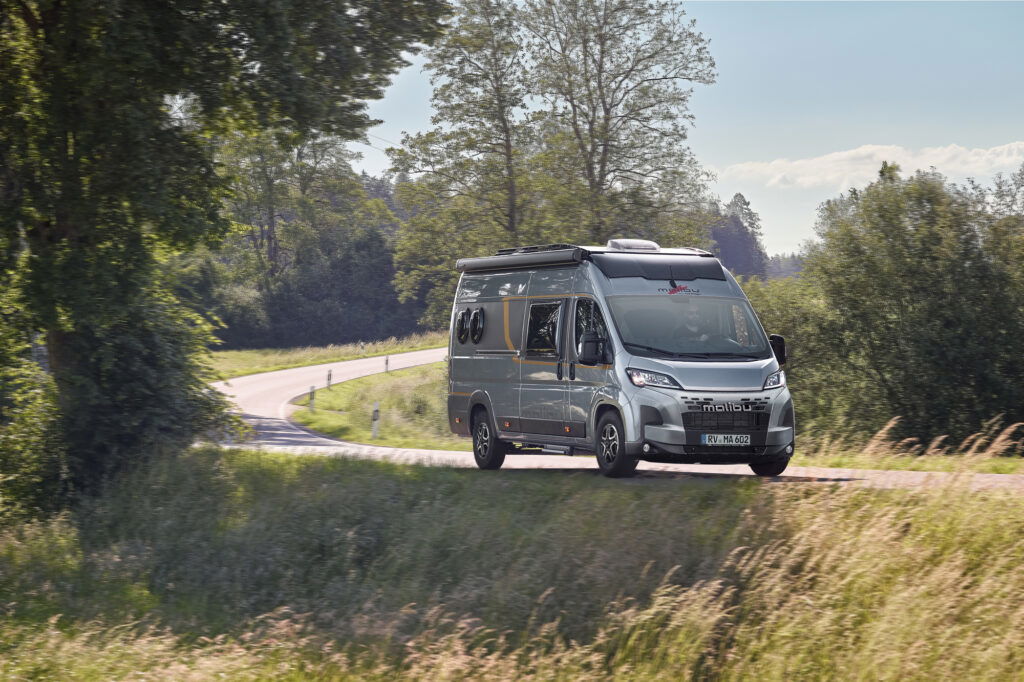Malibu I 430 KB-LE lightweight 3.5 t
from 80.380
GBP*
Compact
Its short vehicle length of under seven metres makes the Malibu I 430 KB-LE the perfect travel companion. You can still holiday in comfort, thanks to the large L-shaped lounge seating area with fold-out side bench seat, space-saving galley kitchen and private dressing room, as well as lengthways single beds with large sleeping area.
Dimensions
L 696 x B 227 x H 297 cm
Sleeping places
4 / 5 (Serie / Option)
Sitting places
4 / 4* (Serie / Option)
Garage
1200 mm

Basic vehicleFiat Ducato
Standard chassisLow frame 35 light
Base engineDiesel 2,2 l
Output (in kW/HP)103 / 140
Transmission6-speed manual transmission
Total length (mm)6960
Total width (mm)2270**
Total height (mm)2970
Wheel base (mm)3800
Double floor height / double floor basement (mm)170 / 390
Headroom in living area (mm)1980
Rear garage interior height (mm)1200
Door width/height rear garage passengers side (mm)950 x 1140
Door width/height rear garage drivers side (mm)950 x 1140
Technically permissible gross vehicle weight (kg3500
Weight in running order (kg) | Legal tolerance of -/+ 5 %2.973 (2.824 - 3.122)
Max. weight of additional equipment in series production specified by the manufacturer (kg)159
Max. towing capacity (kg)2000
Max. number of seats with 3-point / 2-point safety belt while driving4***
Standard sleeping places4
Optional sleeping places5
Rear bed dimensions (mm)2000/1900 x 850
Drop-down bed dimensions (mm)1950 x 1600
Seating area bed conversion dimensions (mm)2030 x 1105/650***
Fridge volume (l)133
Freezer compartment volume (l) 12
Heating systemTruma Combi 6
Fresh water volume (l)125
Waste water volume (l)90
230V socket3
12V socket1
USB socket1
Battery capacity80 Ah
Battery capacity80 Ah
*List price incl. registration documents **Total vehicle width is the measurement from exterior wall to exterior wall (wheel arches on the side, approx.+ 70 mm) ***in conjunction with special equipment

Find a Malibu dealer near you:
Your new camper van or motorhome are waiting for you. You just need to find out where! Find our Malibu dealers near you.

Finden Sie Ihren Malibu Händler in Ihrer Nähe:
Ihr neuer Camper Van oder Ihr neues Wohnmobil wartet schon auf Sie. Sie müssen nur wissen, wo genau. Hier finden Sie unsere Handelspartner ganz in Ihrer Nähe.